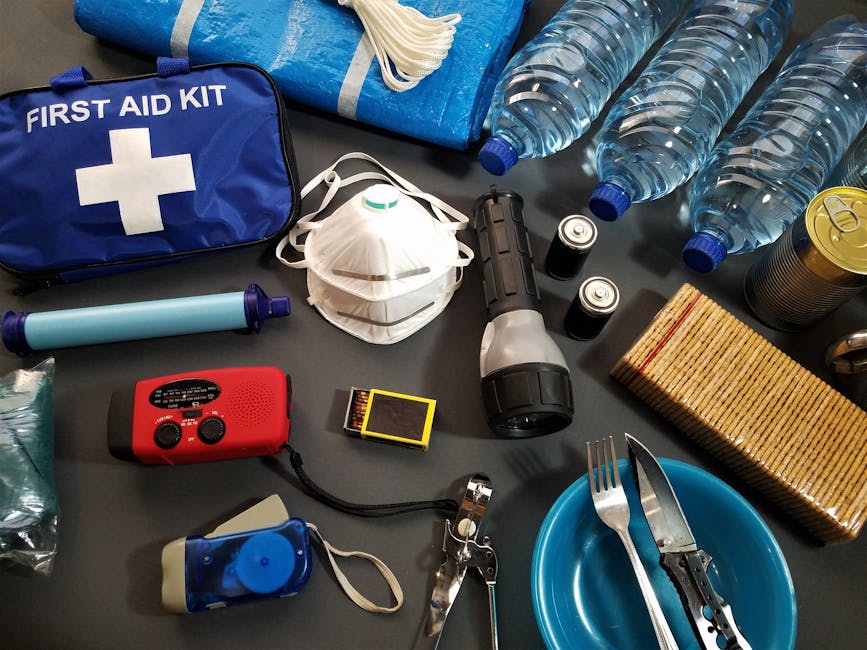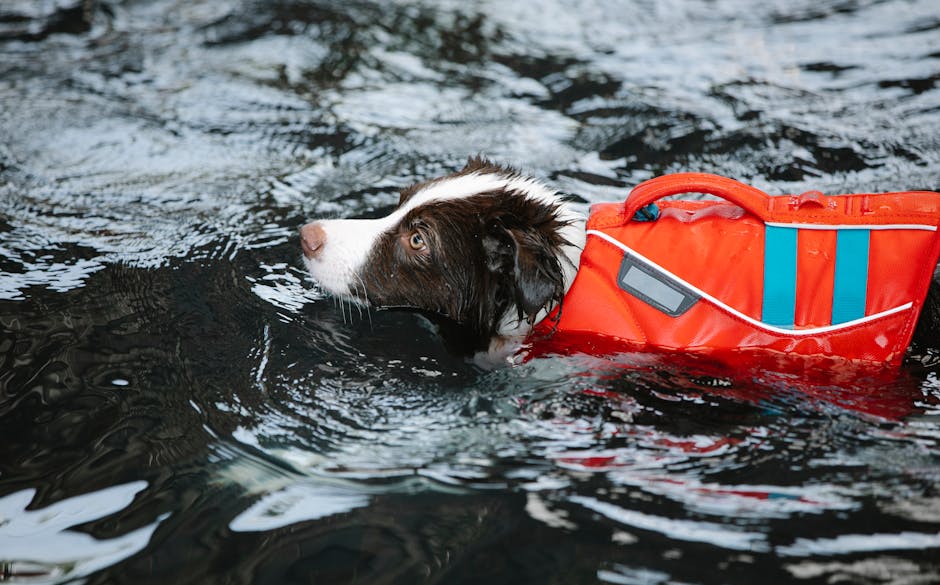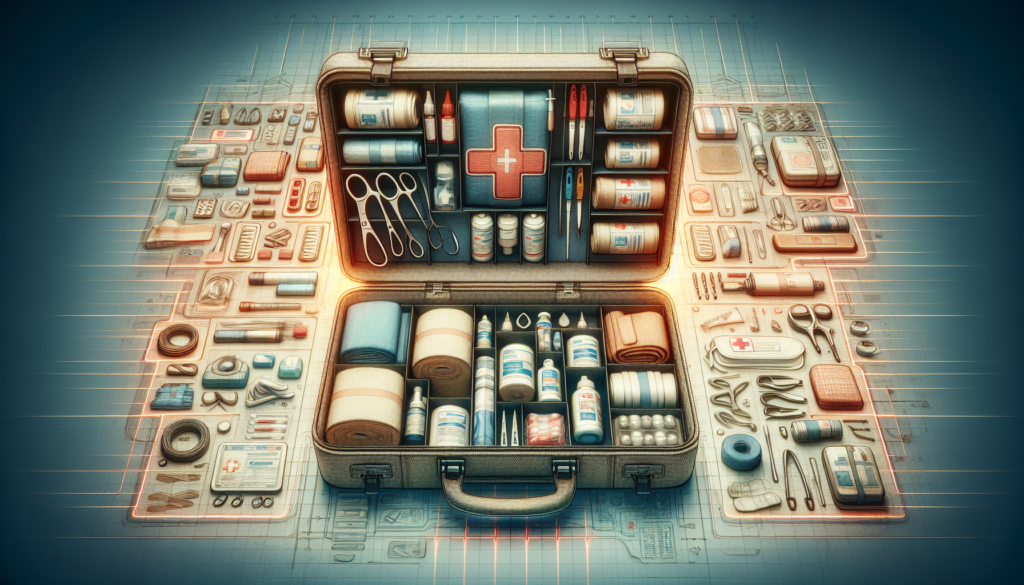Exploring the Essentials: The Ultimate Guide to First Aid Kits
First aid kits are an essential component of any home, workplace, or outdoor adventure. These kits are designed to provide immediate care for injuries or illnesses until professional medical help can be accessed. They contain a variety of supplies such as bandages, antiseptic wipes, gloves, and other items that can help in an emergency situation. In this comprehensive guide, we will delve into the world of first aid kits, exploring their history, importance, contents, and much more.
The History of First Aid Kits
The concept of providing basic medical care in emergencies dates back thousands of years. Ancient civilizations used natural remedies and techniques to treat injuries and illnesses. The formalized practice of first aid as we know it today began in the late 19th century with the establishment of organizations like the St. John Ambulance and the Red Cross. These organizations developed standardized first aid protocols and equipment, leading to the creation of the first official first aid kits.
First aid kits have evolved significantly over the years, with advancements in medical technology and research leading to the inclusion of more specialized items. Today, first aid kits come in various sizes and configurations, catering to different settings and needs.
The Importance of First Aid Kits
First aid kits play a crucial role in providing immediate care to individuals who have been injured or taken ill. In many cases, the actions taken in the first few minutes after an injury can significantly impact the outcome. Having a well-stocked first aid kit on hand can mean the difference between a minor incident and a more serious medical emergency.
First aid kits are especially important in settings where professional medical help may not be readily available, such as remote areas or during natural disasters. By having the right supplies and knowing how to use them effectively, individuals can provide critical assistance to those in need.
The Contents of a First Aid Kit
First aid kits contain a wide range of supplies designed to address common injuries and medical emergencies. While the specific contents may vary depending on the kit’s size and intended use, there are some essential items that are found in most kits:
- Bandages: Including adhesive bandages, gauze pads, and elastic bandages
- Antiseptic wipes: For cleaning wounds and preventing infection
- Medical tape: To secure bandages and dressings in place
- Scissors and tweezers: For cutting bandages and removing splinters
- Gloves: To protect the caregiver from bodily fluids
- Pain relievers: Such as acetaminophen or ibuprofen
- Emergency blanket: To help keep the injured person warm
It is important to regularly check and restock your first aid kit to ensure that all supplies are up to date and in good condition. Additionally, consider customizing your kit to include items that are specific to your needs, such as medications or allergy medications.
Types of First Aid Kits
There are several types of first aid kits available, each designed for specific settings or activities:
Home First Aid Kits
Home first aid kits are essential for treating minor injuries that may occur in a household. These kits typically contain basic supplies for cuts, burns, and other common injuries. It is recommended to keep a first aid kit in a central location in the home where it is easily accessible to all family members.
Travel First Aid Kits
Travel first aid kits are compact kits designed for use on the go. These kits are ideal for vacations, road trips, or outdoor activities where access to medical care may be limited. Travel first aid kits often include items such as sunscreen, insect repellent, and motion sickness medication in addition to standard first aid supplies.
Workplace First Aid Kits
Workplace first aid kits are required by law in many jurisdictions to ensure the safety and well-being of employees. These kits are typically larger and more comprehensive than home kits, as they may need to accommodate a larger number of people. Workplace first aid kits should be tailored to the specific hazards and risks present in the workplace.
Expert Opinions on First Aid Kits
We reached out to Dr. Sarah Johnson, an emergency medicine physician, for her insights on the importance of first aid kits. According to Dr. Johnson, “Having a well-stocked first aid kit is essential for managing minor injuries and medical emergencies. It can make a significant difference in the outcome of an incident, especially in situations where professional medical help is not immediately available.”
Dr. Johnson also emphasized the importance of knowing how to use the items in a first aid kit effectively. She recommends taking a basic first aid course to learn essential skills such as wound care, CPR, and fracture management.
Common Misconceptions About First Aid Kits
There are several misconceptions about first aid kits that can lead to ineffective use or inadequate care. One common misconception is that first aid kits are only needed for serious emergencies. In reality, first aid kits are designed to address a wide range of injuries, from minor cuts and scrapes to more serious conditions.
Another misconception is that first aid kits are only for medical professionals. While having medical training can certainly enhance the care provided, anyone can learn basic first aid skills and use a first aid kit effectively in an emergency situation.
Comparative Analysis of First Aid Kits
There are numerous first aid kits available on the market, ranging from basic kits to specialized kits for specific activities. When choosing a first aid kit, consider factors such as the size of the kit, the types of supplies included, and the intended use. Look for kits that are approved by reputable organizations such as the Red Cross or the Occupational Safety and Health Administration (OSHA).
It is also important to consider the expiration dates of the supplies in the kit and to regularly check and restock as needed. Some kits may also come with additional features such as waterproof packaging or built-in compartments for organization.
FAQs About First Aid Kits
What should I do if I run out of supplies in my first aid kit?
If you run out of supplies in your first aid kit, it is important to restock as soon as possible. You can purchase individual items to replenish your kit or invest in a pre-made refill kit that contains common supplies.
Can I use expired supplies in my first aid kit?
It is not recommended to use expired supplies in your first aid kit, as their effectiveness may be compromised. Check the expiration dates of all items in your kit regularly and replace as needed.
To Wrap Things Up
First aid kits are an essential tool for providing immediate care in emergencies. By understanding the history, importance, contents, and types of first aid kits, you can ensure that you are prepared to handle a wide range of injuries and medical emergencies. Remember to regularly check and restock your kit, and consider taking a first aid course to enhance your skills and confidence in providing care.






